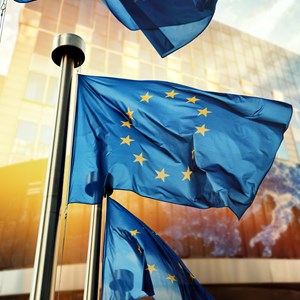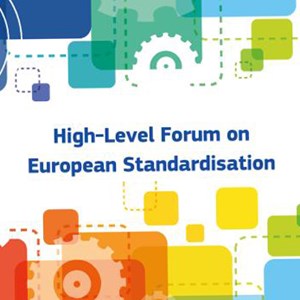NEWS

On 31 January, CEN and CENELEC replied to the call for evidence launched by the European Commission on the upcoming Single Market Strategy. This Strategy aims to modernize the Single Market to better support European competitiveness and innovation. CEN and CENELEC, as two of the three official European Standardization Organizations (ESOs), took this opportunity to outline standardization’s important contribution to the Single Market and how standardization can be used to support the goals of this strategy.

CEN and CENELEC, two of the officially recognized European Standardization Organizations, welcome the European Commission's recently issued Competitiveness Compass. This strategic initiative is a positive and bold first step towards reinforcing the EU's ability to lead in the world economy and advance the twin green and digital transitions.

European Standardization Organizations CEN, CENELEC and ETSI, together with ENISA, the EU Agency for Cybersecurity, are pleased to announce that registrations for the 9th Cybersecurity Standardization Conference are now open. The event will take place on 20 March 2025, in Brussels and online.

A new CEN Workshop is being established to expand on the innovative deliverables of the CHRONICLE research project. The project’s vision is to improve building performance in terms of energy efficiency, comfort, and well-being through the digitalization of building information.

A new CEN Workshop is being established to build upon the innovative outcomes of the R&I project RobétArmé, funded under the Horizon Europe programme. Targeting a step-change in Construction 4.0., the RoBétArmé architecture follows the three shotcrete application phases (inspection and metal printing, construction repair and surface finishing) aiming at automatizing particularly laborious construction tasks of shotcrete application through a highly digitalized robotics solution, which is robust and versatile enough to perform autonomous shotcreting in diverse construction environments e.g. tunnels, buildings, bridges, retaining walls, etc.

The European Commission still continues to publish new reports from the High-Level Forum on European Standardization’s workstreams. The new reports include recommendations on standardization in different fields and how they can support the relevant sectors across Europe.

A new CENELEC Workshop is being established that will bring focus to the discussion on wind energy and Europe’s carbon reduction goals. The project’s vision is to provide clarity in the design requirements for offshore wind turbines.

Screwed and bolted joints are often used to assemble safety-critical components on rail vehicles. The function of a bolted joint is to connect two or more parts in a sufficient and safe manner over the intended service life under the conditions of the railway environment. Bolted joints have huge implications for the safety of railway equipment: on the mechanical level, they are designed to transmit forces between the connected components without failure, separation or relative movement. On the electrical level, they are designed to ensure current transmission between electrical conductors safely and without separation or relative movement.

CEN and CENELEC are reshaping standardization with the SMART project! This groundbreaking project is now entering its first phase and promises full functionality by the end of 2025. It has been a long time coming and offers benefits to both standard drafters and users.

The EN 17988 series of European standards on the circular design of fishing gear and aquaculture equipment has officially been published, marking a significant milestone in promoting circularity within the fishing gear industry. Developed by CEN/TC 466, these standards provide a comprehensive framework to support circular design and life-cycle management of fishing gear and aquaculture equipment.